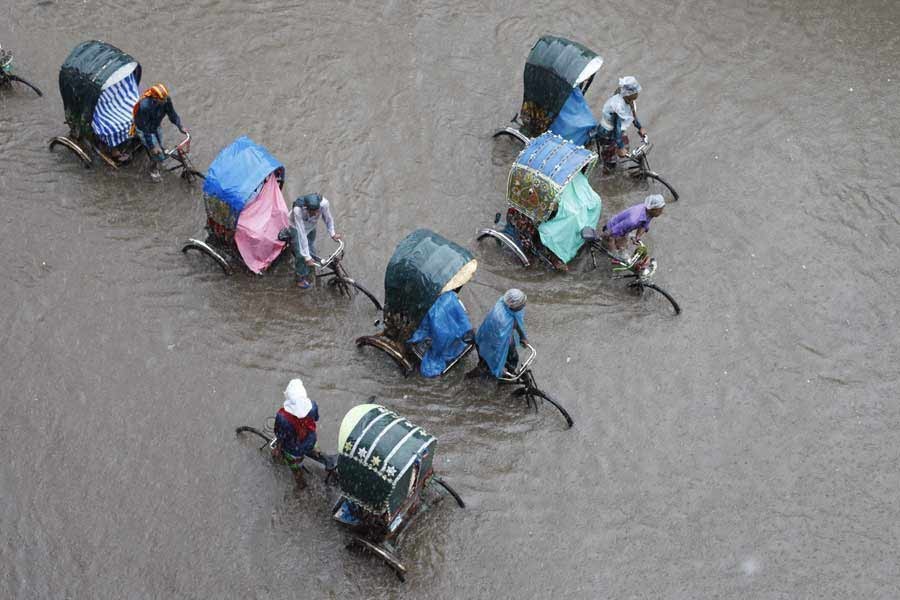True, Dhaka is not the only city in the world to have found itself in an imbroglio over an endemic water-logging. However few cities -- least of all the capitals -- experience a deluge with just 65 milimetre (mm) rainfall in a day. Mumbai and Chennai witnessed far worse flooding in July, 2005 and in December, 2015 respectively. But these two Indian cities received not only 944 mm and 300 mm rainfalls in just 12 hours but also further heavy rainfall for days together. What if the climate-induced rainfall exceeds all previous records in Dhaka and Chattogram? In such an event, the scenario is likely to be nightmarish. Now drizzles create water-logging on several roads simply because the drainage system is either defective or not properly maintained. This is unacceptable. For years the authorities assure people that on completion of this or that project, Dhaka would get rid of water-logging but the situation does not improve at all.
Intense or prolonged rainfall overwhelms the capacity of the drainage system not only of the South Asian cities but also of those in Europe, America, Australia, Japan and China. This year a few Japanese and Chinese urban localities have even experienced landslides and damage to and destruction of infrastructure on account of heavy rains. Climate change is likely to cause more rains in this part of the world. One positive development is the eviction of illegal structures from the banks of the Buriganga and other rivers girdling Dhaka city. But the rivers are yet to reclaim the breadth and depth they once had. In many Western countries, rivers run through the city and those are maintained with utmost care so much so that their waters are almost crystal clear. During heavy rainfall, the rivers work as receptacles of the excess waters in order to prevent urban flooding.
Unfortunately, not only have the authorities here allowed to fill up flood plains and water retention areas around Dhaka, they have turned a blind eye to illegal occupation of its canals and encroachment of rivers year after year. Only in recent years have they made some serious efforts for recovery of these arteries of Dhaka from illegal occupants. But such efforts are not coordinated enough and carried out without keeping an eye on the future need of this mega city. Even the Detailed Area Plan (DAP) on Dhaka was manipulated because of conflict of interests with powerful quarters.
Contrary to this, the futuristic plans some of the European countries have undertaken to overcome challenges posed by floods predicted to get worse may provide a lesson for the authorities concerned. The Netherlands' Adaptive Pathway Approach may be of help. It has planned sand nourishment of its beaches to maintain the coastline, set new flood-risk standard and enhanced pumping capacity so that the methods can be equal to the need for 2050. Then the Environment Agency of the UK has developed the Thames estuary 2100 Plan to recommend how to manage the tidal flood risk at the end of this century and beyond for protection of 1.3 million people and £275 billion worth of property. Compared to those plans, draining out rainwater from Dhaka is a less daunting challenge. One solution, although not enough, can be mandatory catching of rainwater in Sintex tanks. If each building catches 10,000 litres, it stops spillover on to roads and the water can also be retained for future use.


